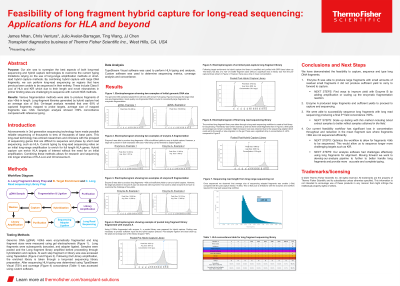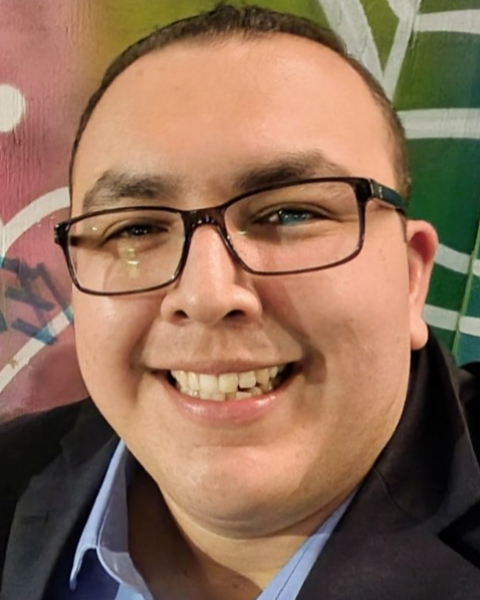Back

(P111) Feasibility of long fragment hybrid capture for long-read sequencing of HLA and beyond
Location: Platinum Ballroom

Poster Presenter(s)
Aim: Advancements in 3rd generation sequencing technology have made possible reliable sequencing of thousands to tens of thousands of base pairs. This long-read technology has enticed researchers and clinicians with the prospect of sequencing genes that are difficult to sequence and phase by short read sequencing, such as HLA. Current typing by long-read sequencing relies on an initial long-range amplification to enrich for full length HLA genes, but this has the drawback of failed amplification due to novel mismatches in primer binding sites. Alternatively, hybrid capture can enrich HLA targets of interest without the need for an initial amplification. We aimed to combine hybrid capture with large DNA fragments to perform long-read sequencing on regions of interest. Here we present the initial results for producing, capturing, and sequencing fragments >3Kb.
Method: The genomic DNA derived from cell lines was prepared for hybrid capture by fragmentation and standard library preparation. We measured the size of the fragments using gel electrophoresis throughout the workflow, during several checkpoint steps. The final library was carried through to hybrid capture using HLA specific probes for the 11 classic loci and ABO. Following enrichment, we prepared the library for long-read sequencing. After sequencing, reads were analyzed for genotype assignment, average length, allele balance and on-target percentage of the mapped reads.
Results: The long fragment library generated by hybrid capture had an average size of 4kb. On-target analysis revealed that over 60% of the captured fragments mapped to probe targets, average size of mapped fragments exceeds 2Kb. Genotypic analysis showed ≥95% concordance compared with reference typing and balance between alleles was on average >50%.
Conclusion: We have demonstrated that it is feasible to capture, sequence, and type long DNA fragments. Future directions will involve optimizing the assay and improving the analysis pipeline.
Method: The genomic DNA derived from cell lines was prepared for hybrid capture by fragmentation and standard library preparation. We measured the size of the fragments using gel electrophoresis throughout the workflow, during several checkpoint steps. The final library was carried through to hybrid capture using HLA specific probes for the 11 classic loci and ABO. Following enrichment, we prepared the library for long-read sequencing. After sequencing, reads were analyzed for genotype assignment, average length, allele balance and on-target percentage of the mapped reads.
Results: The long fragment library generated by hybrid capture had an average size of 4kb. On-target analysis revealed that over 60% of the captured fragments mapped to probe targets, average size of mapped fragments exceeds 2Kb. Genotypic analysis showed ≥95% concordance compared with reference typing and balance between alleles was on average >50%.
Conclusion: We have demonstrated that it is feasible to capture, sequence, and type long DNA fragments. Future directions will involve optimizing the assay and improving the analysis pipeline.

